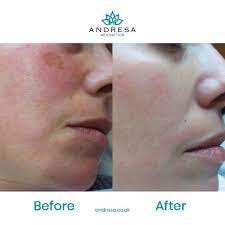Understanding Hyperpigmentation: Causes, Types and Symptoms ?
Understanding Hyperpigmentation: Causes, Types and Symptoms ?
Hyperpigmentation is a common skin condition that causes patches of skin to become darker than the surrounding skin. It occurs when the skin produces excess melanin, the pigment that gives skin its color.

Causes: There are several factors that can contribute to the development of hyperpigmentation, including:
- Sun exposure: Ultraviolet (UV) radiation from the sun is a major cause of hyperpigmentation. Prolonged sun exposure can cause the skin to produce excess melanin, resulting in dark spots or patches.
- Hormonal changes: Hormonal fluctuations during pregnancy, menopause, or due to birth control pills can trigger the overproduction of melanin.
- Inflammation: Skin inflammation caused by acne, eczema, or other skin conditions can lead to hyperpigmentation.
- Genetics: Some people are more prone to hyperpigmentation due to their genetics.
Types: There are several types of hyperpigmentation, each with unique characteristics and causes:
- Melasma: A type of hyperpigmentation that is common in women and often appears on the face as dark, patchy areas. Melasma is often triggered by hormonal changes and sun exposure.
- Post-inflammatory hyperpigmentation (PIH): This type of hyperpigmentation occurs after the skin has been inflamed due to acne, eczema, or other skin conditions. PIH is often characterized by dark spots or patches that appear after the initial inflammation has subsided.
- Age spots: Also known as liver spots or sunspots, age spots are flat, brown patches that develop on the skin due to sun exposure and aging.
Symptoms: Hyperpigmentation is characterized by the appearance of dark spots or patches on the skin. These spots or patches can vary in size and color, and may be accompanied by other symptoms, such as itching or flaking. The location of hyperpigmentation may also vary depending on the type of hyperpigmentation. For example, melasma often appears on the forehead, cheeks, and upper lip, while age spots tend to appear on areas of the skin that are frequently exposed to the sun.
Comments
Post a Comment